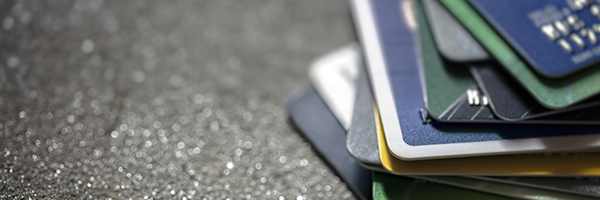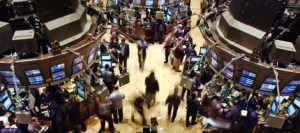March 18, 2024 | Daily JAM, Morning Briefing |
About 8.5% of credit card balances and 7.7% of auto loans moved into delinquency in the fourth quarter of 2023, the Federal Reserve Bank of New York reported last week. “Credit card and auto loan transitions into delinquency are still rising above pre-pandemic levels,” said Wilbert van der Klaauw, economic research advisor at the New York Fed. “This signals increased financial stress, especially among younger and lower-income households.” Total household debt increased by $212 billion last quarter to $17.5 trillion

September 1, 2023 | Daily JAM, Mid Term |
More American consumers fell behind on their car loan and credit card payments in the last quarter than at any time in more than a decade. The problem is most acute for lower-income consumers who have exhausted the money from government stimulus checks during the Pandemic and who are seeing breaks on rent and student debt expire. Higher interest rates from the Federal Reserve aren’t helping any. The average credit card interest rate is already at a record high 20.6%, according to Bankrate.com, and could well continue climbing if the Fed tightens further in its fight against inflation. Student loan payments that were paused for more than three years are poised to resume in October. And banks and other lenders have been clamping down on credit lines for months after the spring banking turmoil. There is, of course, the question of whether the Fed is “happy” with this trend.

August 11, 2023 | Daily JAM, Mid Term |
Credit card balances hit $1.03 trillion in the second quarter, up 4.6% from $986 billion in the preceding quarter, according to the Federal Reserve Bank of New York.

April 24, 2023 | Daily JAM, Videos |
This week’s Trend of the Week is Consumers Are Falling Behind on Debt Payments. Although the economy has been slowing for some time, there’s been a lag in consumers falling behind on debt payments. Until recently, consumers seem to have been relying on funds saved during the Covid crisis, but we’re now starting to see that life raft disappear as consumers start to sink underwater on debt payments. This isn’t a good sign for banks that may already be struggling with unrealized losses from the banking crisis. Wells Fargo recently put aside $1.2 billion for potential loan losses and other banks are following suit. About 20% of consumers are using “buy now, pay later” credit card features for things like groceries, showing that the slowing economy and slowing wage growth are finally catching up with consumers. Watch those delinquency rates going forward.

June 30, 2020 | Daily JAM, Short Term |
We'll soon get new figures from the Federal Reserve now that the second quarter is coming to an end today, but I'd guess that the debt picture won't be better than it was at the end of the first quarter on March 31. At the end of May non-financial corporate debt in...

February 8, 2020 | Daily JAM, Friday Trick or Trend |
Our regular (or occasional or perhaps occasionally regular) Friday series (actually running on Saturday this week) Trick or Trend looks at what might (or might not) be emerging investible trends. Exclusively on JAM. This post won't run anywhere else. Ever. Largely...

April 27, 2019 | Daily JAM |
Our regular (or occasional or perhaps occasionally regular) Friday series (running on Saturday this week) Trick or Trend looks at what might (or might not) be emerging investible trends. Exclusively on JAM. This post won't run anywhere else. Ever. On Friday, April 26,...

May 18, 2017 | Daily JAM |
To subscribe to JAM you need to fill in some details below including, ahem, some info on how you'll pay us. A subscription is $199 (although if you're subscribing with one of our special offers it will be lower) for a year for ongoing and continuing access to the...








